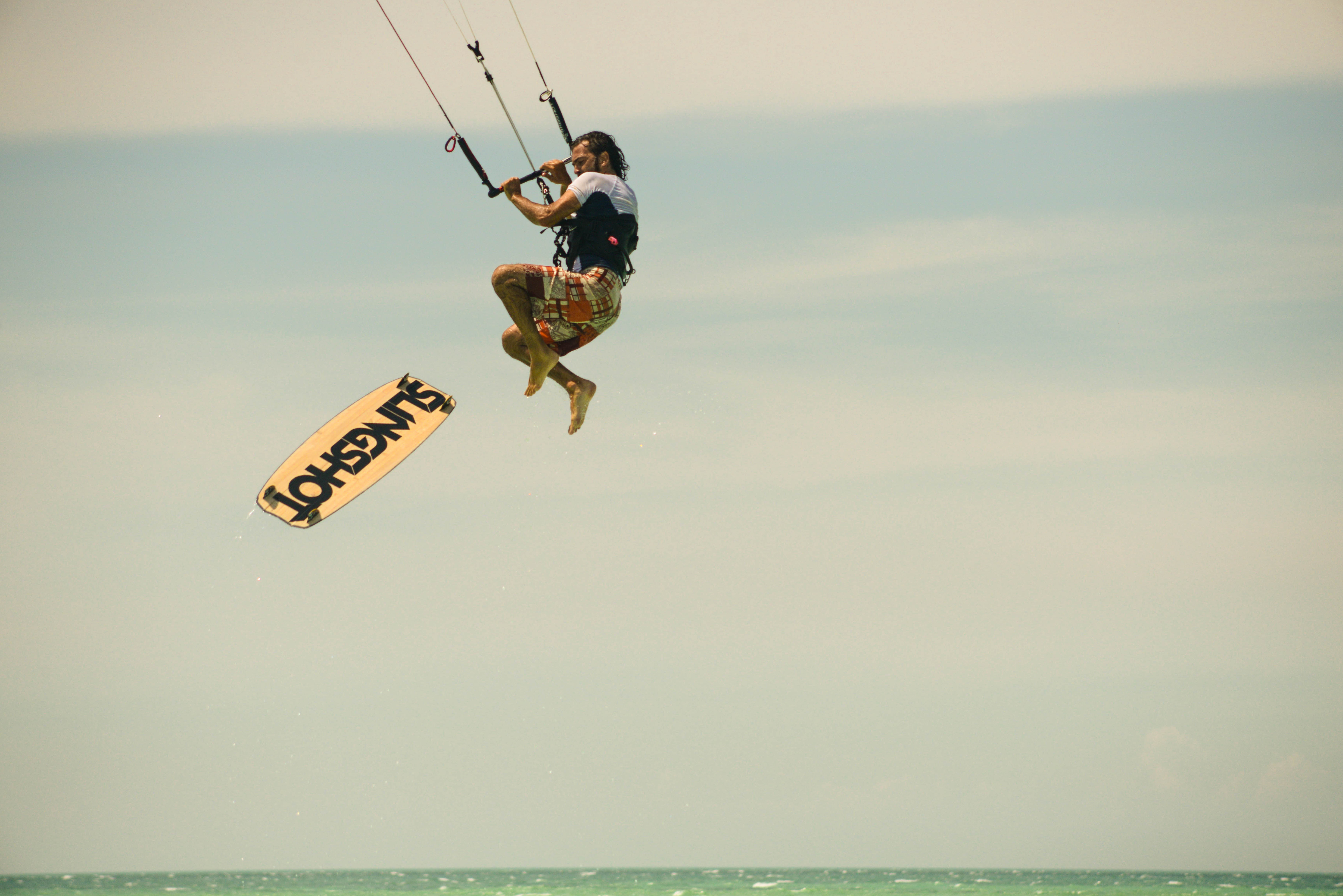Besides burning calories, kiteboarding has other important benefits:
- Kideboarding tones the body, especially the upper area, arms and abdomen. Strengthening your abdominal area resulting in turn in a physical improvement of the abductors and legs too. You increase the strength in your arms by holding, the kite in legs by bending over the board to ride, and the muscles of the hands by grabbing the bar.
- Healthy heart. Kiteboarding also combines aerobics and resistance exercises, perfect for keeping a balance weight, toning your figure and gaining physical strength, all of which keep your heart healthy.
- Increases coordination and concentration. You are focusing on several tasks at a same time, and you must keep the kite in the air with one hand while you enter the water grabbing the board with the other hand.
- Balance. Also riding on the board is great to improve your balance.
- Stress relief. With any sport you eliminate stress, but if it is an extreme sport adrenaline rushes are much higher, creating a great feeling of wellness.
- Immune system boost. By boosting endorphins and reducing your stress levels, you also boost your immune system.
- Better reflexes and adaptability. The way of navigation and jumping in kitesurfing, in which you have to constantly make decisions about movement and position of the bar, body, board, etc, makes you resolve difficult situations on the water, increasing your reflexes and reaction capacity.
- Respect for nature. Like any sport in which you interact with the environment, kitesurfing fosters respect for the ocean, animals and nature in general, as well as makes you breathe fresh air away from the city smog.
- Community and networking. When you practice kitesurfing you become part of a community and meet other people that enjoy the same activities, which helps you to interact with people with common interests and tastes, improves your relationships and your ability to communicate.
- New experiences and sensations. Kiteboarding allows you to experience new sensations, like the feeling of flying, increasing your level of happiness.
So, the more you practice the fitter and happier you will be — and we just happen to have a great way to help you with that…
Kiteboarding is fun and addictive. Once you feel the pull of the kite, you’re hooked and you’ll never be the same. You become obsessed with watching the wind (and wind forecast), and every time you see a body of water you think, “Can I kite there?” And in addition to enjoying the outdoors and the water, you’ll get a great workout.


